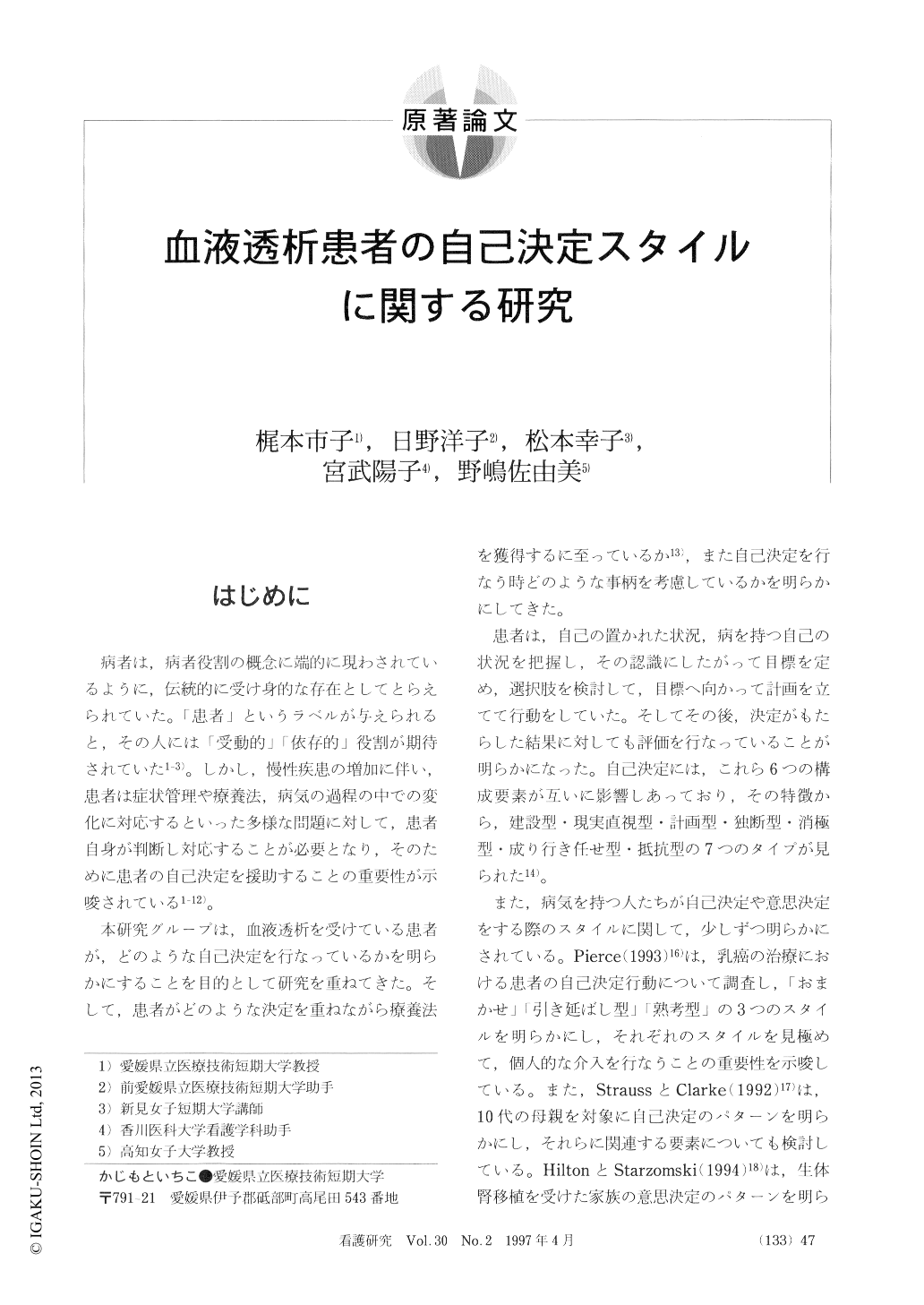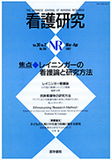Japanese
English
- 有料閲覧
- Abstract 文献概要
- 1ページ目 Look Inside
はじめに
病者は,病者役割の概念に端的に現わされているように,伝統的に受け身的な存在としてとらえられていた。「患者」というラベルが与えられると,その人には「受動的」「依存的」役割が期待されていた1-3)。しかし,慢性疾患の増加に伴い,患者は症状管理や療養法,病気の過程の中での変化に対応するといった多様な問題に対して,患者自身が判断し対応することが必要となり,そのために患者の自己決定を援助することの重要性が示唆されている1-12)。
本研究グループは,血液透析を受けている患者が,どのような自己決定を行なっているかを明らかにすることを目的として研究を重ねてきた。そして,患者がどのような決定を重ねながら療養法を獲得するに至っているか13),また自己決定を行なう時どのような事柄を考慮しているかを明らかにしてきた。
The purpose of this descriptive study was to identify the decision-making style among the dialysis patients. Subjects were a Convenience sample of hemodialysis patients who agreed to participate this study. The data was collected through semistructured interviews. The interviews were recorded on the tape and transcribed. Decision-making episodes were picked and interpreted bysearchers. Data was analyzed based on the Inductive Theory Approach.
Result: Subject were 21 patients from 4 hospitals. The mean age was 51.1 and the mean duration after they started the hemodialysis was 9.1 years.
The 16 decision-making styles were identified: accept, unvacillate, resignation, compromise, perseverance, challenge, self-activation, grope, crisis-avoidance, withdrawal, prudent, reserve, escape, refusal, dogmatic, and entrust. These 16 decision making styles were characterized by the reality oriented perception, the constructive regimes, the higher quality of social support. On the other hand, the passive decision-making styles were characterized by the distorted perception, the passive regimes, and the poor social support.
Discussion: The reality orientation, energy, openness, values system were discussed as key factors which determined the decision-making style among hemodialysis patients. The nursing approach supporting the patients to make their decision were discussed.

Copyright © 1997, Igaku-Shoin Ltd. All rights reserved.


